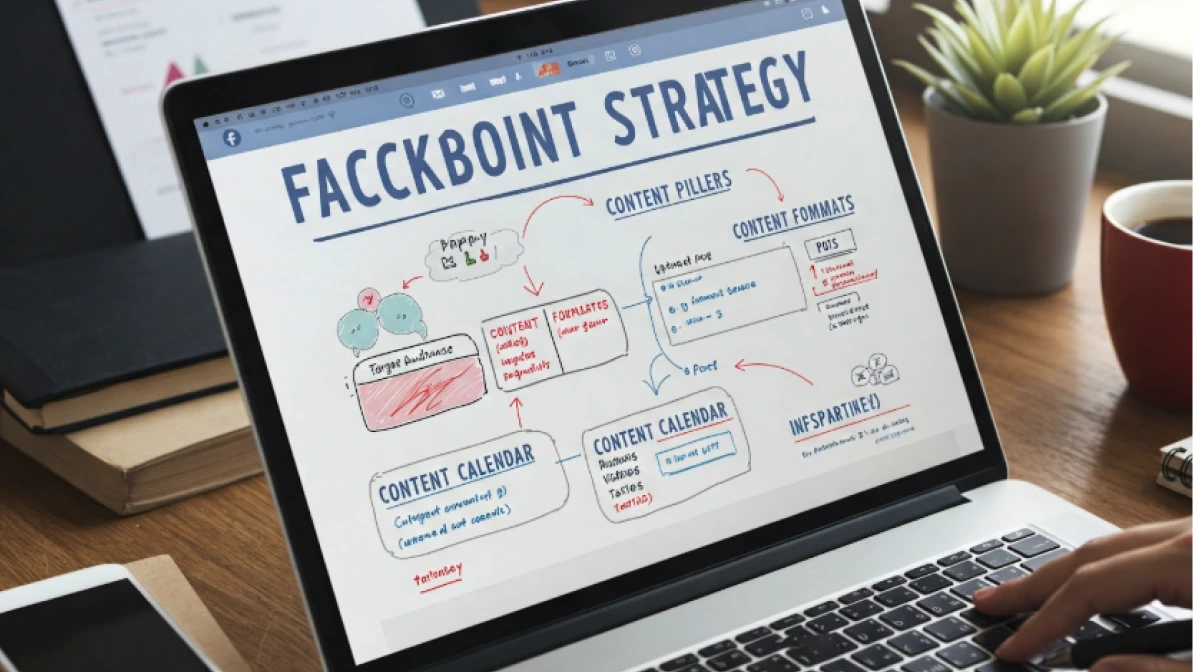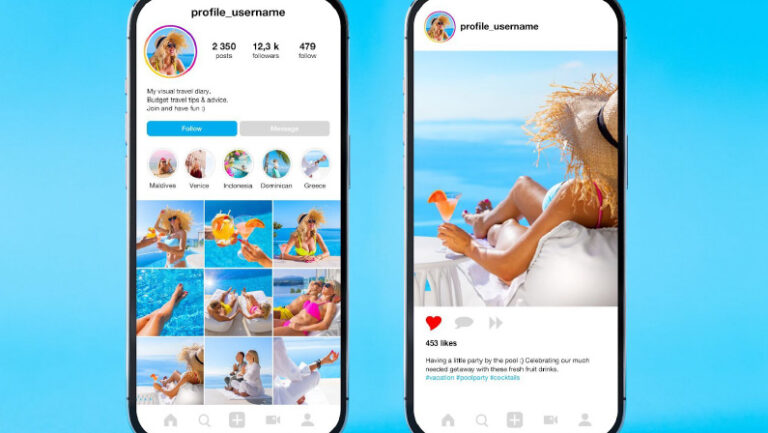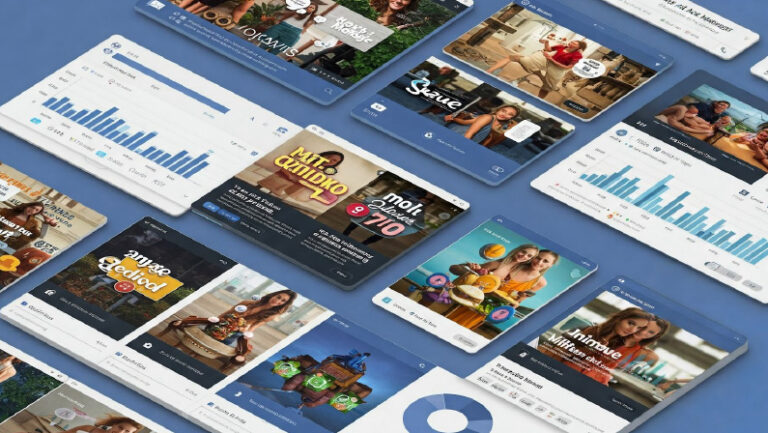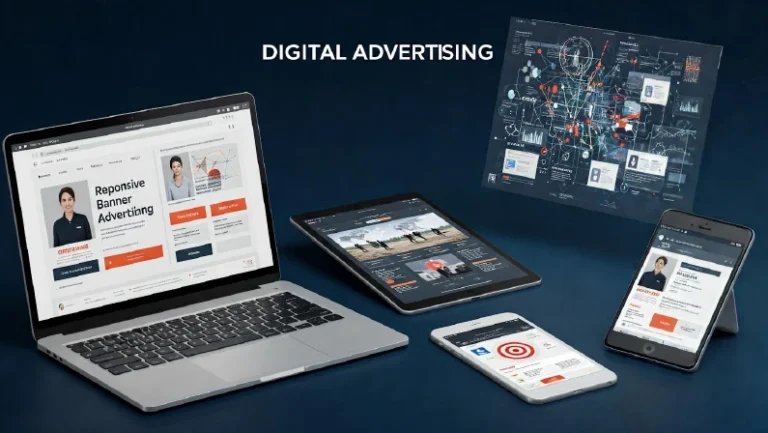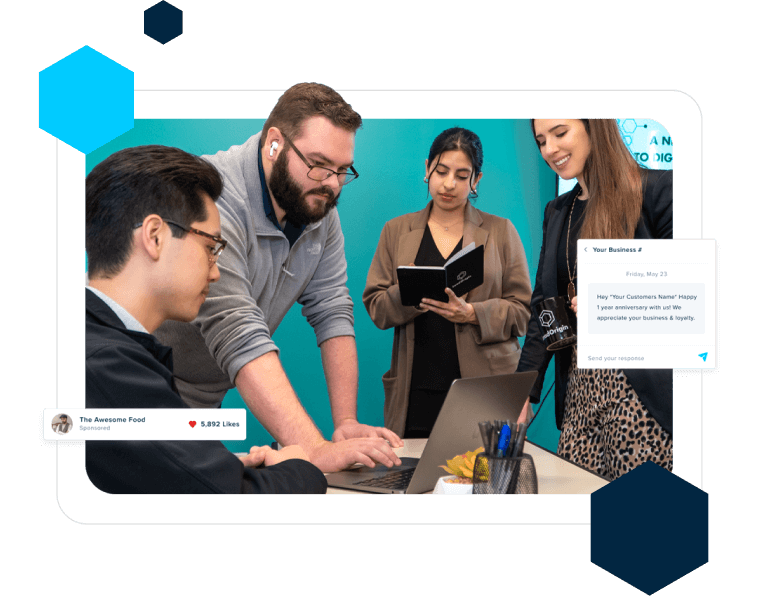Having a well-defined Facebook content strategy is crucial for businesses aiming to connecting with their audience and increasing Facebook engagement.
With over 2.8 billion monthly active users, Facebook remains a powerful platform for reaching a diverse audience and fostering community around your brand.
In this guide, we will explore the importance of a Facebook content strategy and how to develop one that meets your business goals and audience preferences.
What is a Facebook Content Strategy?
A Facebook content strategy is a detailed plan that outlines how you will create, post, and manage content on Facebook to achieve specific goals, such as increasing brand awareness, driving traffic, or generating leads. This strategy involves understanding your target audience, setting clear objectives, and using data to inform your content creation and posting schedule.
Why Facebook Content Strategy is Essential?

A comprehensive Facebook content strategy ensures that your efforts on the platform are purposeful and aligned with your business objectives. It helps you stay consistent in your messaging, adapt to changing trends, and measure the effectiveness of your campaigns.
A well-executed strategy can lead to higher engagement rates, better customer relationships, and improved ROI.
Understanding Your Audience
Knowing your audience is the cornerstone of any effective content strategy. To create content that resonates, you must understand who your audience is, what they need, and how they interact with content on Facebook.
Defining Your Target Audience
Start by identifying the demographics, interests, and behaviors of your ideal followers. Use Facebook Insights and other analytics tools to gather data about your current audience. Define aspects such as age, gender, location, and occupation. This information will help you tailor your content to meet the specific needs of your audience.
Understanding Audience Needs and Preferences
Once you’ve identified your target audience, delve deeper into their needs and preferences. What types of content do they engage with the most? Do they prefer videos, images, or articles? Pay attention to the topics they are interested in and the problems they are looking to solve. This will guide your content creation process and ensure that your posts are relevant and engaging.
Analyzing Competitor Audiences
Analyzing your competitors can provide valuable insights into what works and what doesn’t in your industry. Look at the type of content competitors are posting, how often they post, and the engagement they receive. Identify gaps in their strategy that you can fill and opportunities to offer something unique to your audience.
Setting SMART Goals for Your Facebook Content

To achieve success with the best Facebook marketing strategies, it’s essential to set clear and actionable goals. These goals will guide your content creation process and help you measure the impact of your efforts. Utilizing the SMART framework is an effective way to ensure your goals are Specific, Measurable, Achievable, Relevant, and Time-bound.
What are SMART Goals?
SMART goals are designed to provide a clear roadmap for achieving your objectives. Each component of a SMART goal ensures that your targets are clearly defined and realistically attainable, leading to more focused and effective action.
- Specific: Goals should be clear and specific, answering the Who, What, Where, When, and Why.
- Measurable: Goals need to be measurable to track progress and determine success.
- Achievable: Goals should be realistic and attainable, considering available resources and constraints.
- Relevant: Goals must align with broader business objectives and be relevant to your overall strategy.
- Time-bound: Goals should have a deadline to create a sense of urgency and timeline for evaluation.
Examples of Facebook Content Goals
Here are a few examples of SMART goals you can set for your Facebook content:
- Increase Facebook page likes by 15% in the next three months by running targeted ad campaigns.
- Boost post engagement (likes, shares, and comments) by 20% over the next quarter by posting more interactive content such as polls and questions.
- Drive traffic to your website by 25% in the next six months through consistent sharing of blog posts and promotional content.
- Generate 50 new leads through Facebook algorithm in the next two months by using lead generation ads and relevant call-to-action posts.
Key Metrics to Track
To evaluate the success of your goals, you need to track the right metrics. Key performance indicators (KPIs) you might consider include:
- Engagement Rate: Likes, comments, and shares.
- Reach and Impressions: The number of people who see your content and the frequency they see it.
- Page Likes and Follows: Total number of likes and follows on your Facebook page.
- Click-Through Rate (CTR): Percentage of people who click on your links.
- Conversion Rate: Number of people who take a desired action, such as signing up for a newsletter or making a purchase.
- Video Views and Watch Time: Number of views and the total time spent watching your videos.
Creating Compelling Facebook Content

Do you think about how to create engaging Facebook posts? Creating eye-catching and engaging content is at the heart of any successful Facebook content strategy. The content you produce must not only capture attention but also encourage interaction and drive your audience towards your goals.
Content Pillars
Content pillars are the main themes or topics you will focus on in your Facebook content. Identifying these pillars helps you stay consistent and relevant. Examples of content pillars might include industry news, product information, customer stories, and educational content.
Content Formats
Facebook offers a variety of content formats to keep your audience engaged. Utilizing a mix of these can help you appeal to different preferences and maximize your reach.
Text Posts
Text posts are simple and effective ways to share updates, pose questions, or spark conversation for Facebook post ideas for businesses. They should be concise, engaging, and often include a call-to-action to encourage interaction.
Images
Visual content tends to attract more attention. Using high-quality images that are relevant to your brand can boost engagement. Incorporate photos of products, behind-the-scenes shots, or user-generated content.
Videos
Videos can tell a story, provide value, and capture attention more effectively than static images. Create short, engaging videos to showcase products, share tutorials, or feature customer testimonials.
Live Videos
Live videos offer a real-time connection with your audience, allowing for direct interaction and engagement. Use live sessions for Q&As, product launches, or live events to create a sense of immediacy and exclusivity.
Stories
Facebook Stories are short, ephemeral content that disappears after 24 hours. Use stories for quick updates, behind-the-scenes content, or time-sensitive promotions. Their temporary nature can create a sense of urgency.
Reels
Reels are a relatively new addition to Facebook, similar to Instagram Reels. These short, entertaining videos can help you reach new audiences and showcase your brand’s creative side.
Links
Sharing links to your website, blog posts, or other resources can drive traffic and provide valuable information to your audience. Always include a compelling headline and image to increase click-through rates.
Content Calendar
A content calendar is a crucial tool for planning and organizing your Facebook content. Here are Facebook content calendar tips to help ensure that your posts are consistent, timely, and aligned with your overall strategy.
- Plan Ahead: Schedule your posts weekly or monthly in advance to avoid last-minute stress and ensure a steady flow of content.
- Balance Content: Mix different types of content (text, images, videos) to keep your audience engaged.
- Timing: Align your posts with key dates, holidays, and events relevant to your audience and industry.
Content Curation vs. Creation
Balancing content creation and curation can save time and provide value to your audience.
- Content Creation: Original content tailored to your brand’s voice and goals. This includes blog posts, videos, infographics, and more.
- Content Curation: Sharing relevant, high-quality content from other sources. This type of content can provide additional value and perspectives to your audience while reducing your content production workload.
Optimizing Your Facebook Content for Maximum Reach and Engagement
To maximize the impact of your Facebook content, optimizing for reach and engagement is essential. Understanding the platform’s nuances and leveraging its features can help your content perform better.
Understanding the Facebook Algorithm
Facebook’s algorithm dictates which posts appear on users’ feeds, prioritizing content that encourages meaningful interactions. Key factors include:
- Engagement: Content that receives likes, comments, and shares.
- Relevance: Posts that are relevant to users’ interests and previous interactions.
- Timeliness: More recent posts are preferred over older ones.
- Content Type: Different types of content (e.g., videos, images) may perform better depending on trends and user preferences.
Using Relevant Keywords and Hashtags
Incorporating keywords and hashtags can increase your content’s visibility:
- Keywords: Use relevant keywords in your post captions and descriptions to improve searchability.
- Hashtags: Utilize appropriate hashtags to categorize your content and make it discoverable to users interested in those topics.
Posting at Optimal Times
Posting when your audience is most active can boost engagement:
- Analyze Data: Use Facebook Insights to determine when your audience is online.
- Experiment: Test different posting times to identify when your content performs best.
Engaging with Your Audience
Active engagement with your audience can foster stronger relationships and boost your content’s reach:
- Respond Promptly: Answer comments and messages quickly to show your audience that you value their input.
- Ask Questions: Encourage interaction by asking questions or prompting discussions in your posts.
- Acknowledge Feedback: Show appreciation for positive feedback and address any concerns or criticisms professionally.
Running Facebook Contests and Giveaways
Contests and giveaways can significantly boost engagement and attract new followers:
- Clear Rules: Ensure your contest rules are clear and comply with Facebook’s guidelines.
- Attractive Prizes: Offer prizes that are appealing to your audience and relevant to your brand.
- Encourage Interaction: Drive engagement by requiring participants to like, share, comment, or tag friends.
Cross-Promotion
Promoting your Facebook content across other platforms can increase visibility:
- Use Social Media: Share your Facebook posts on other social networks like Twitter, Instagram, and LinkedIn.
- Collaborate with Influencers: Partner with influencers or other brands for cross-promotion opportunities.
- Leverage Email Marketing: Include links to your Facebook content in your email newsletters to drive traffic from your mailing list.
Analyzing and Measuring Your Results
To ensure the success of your Facebook marketing efforts, regularly analyzing and measuring your results is essential. This process involves understanding key metrics, adjusting your strategies based on insights, and experimenting with different approaches to maximize your performance.
Using Facebook Insights
Facebook Insights is a powerful tool that provides in-depth data about your page’s performance. Some key metrics to monitor include:
- Post Reach: The number of people who have seen your posts.
- Engagement: Likes, comments, shares, and other interactions with your content.
- Page Views: The number of times your page has been viewed.
- Follower Demographics: Information about the people who follow your page, such as age, gender, and location.
Regularly reviewing these metrics can help you understand what types of content resonate most with your audience and adjust your strategy accordingly.
Analyzing Data and Making Adjustments
Once you have gathered data using Facebook Insights, it’s important to analyze it and make necessary adjustments:
- Identify Trends: Look for patterns in your top-performing posts to determine what content, posting times, or formats generate the most engagement.
- Optimize Content: Use your findings to refine your content strategy. For example, if videos perform better than images, consider incorporating more video content.
- Adjust Posting Schedule: If you find that your posts get more engagement at certain times, tweak your posting schedule to align with these optimal periods.
A/B Testing
A/B testing, or split testing, involves comparing two variations of a post to see which performs better.
- Create Variations: Test different elements such as headlines, images, call-to-action buttons, or posting times.
- Measure Performance: Use Facebook Insights to compare the engagement and reach of each variation.
- Implement Findings: Apply the insights from your A/B tests to optimize future content and strategies.
Partnering with LeadOrigin for Maximized Results
If you’re looking to take your Facebook marketing to the next level, consider partnering with LeadOrigin.
As a digital marketing and creative agency, we provide a full suite of services to enhance your online presence and drive business growth. With offices located at 2100 W Loop S #1400, Houston, TX 77027, and 228 Hamilton Ave Suite 325, Palo Alto, CA 94301, we are well-positioned to support businesses nationwide.
At LeadOrigin, we combine a customized omnichannel and data-driven strategy to deliver unparalleled digital intelligence and game-changing ideas. Our team of experts is ready to help you optimize your Facebook content, analyze performance, and make informed adjustments to achieve your business goals. Visit us at LeadOrigin to learn more and get started on your path to success.
